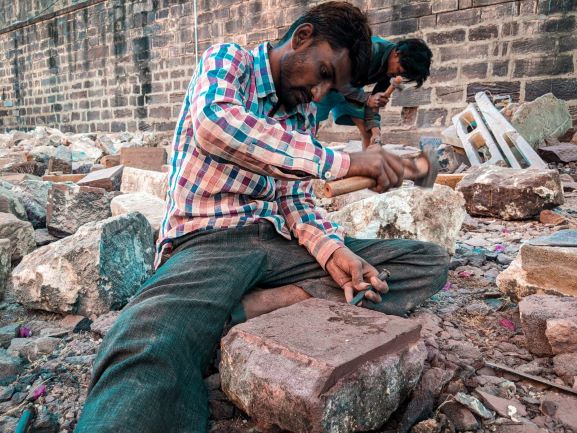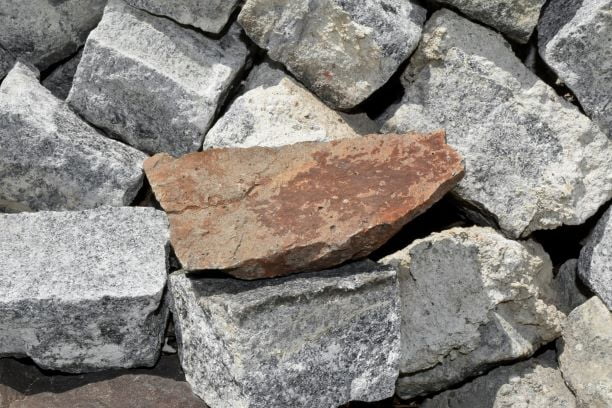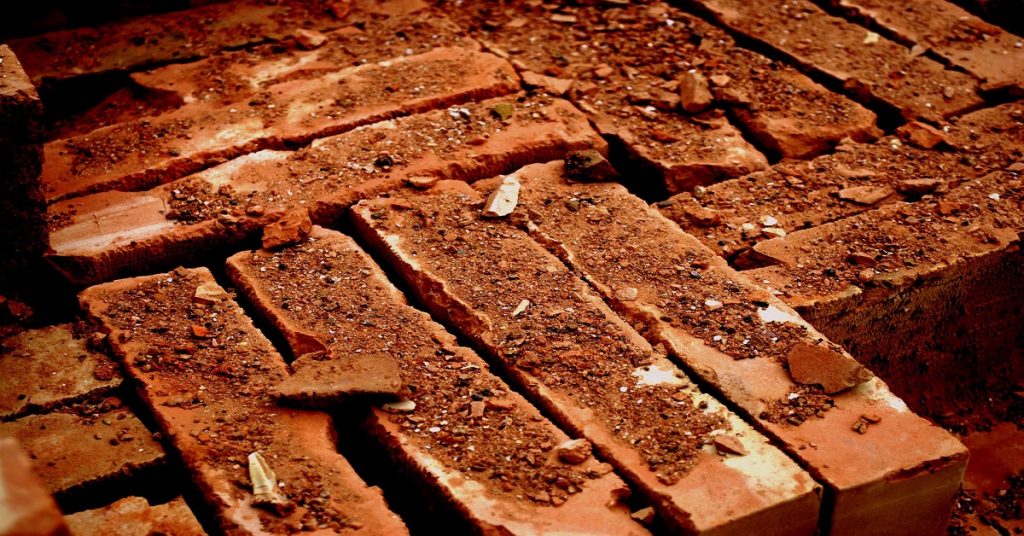Characteristics of good building stones

There is no single stone which satisfies all the characteristics or qualities of good building stones. The qualities of the stones which are used for different purpose varies based on the nature of work for which the stones are selected. Although a stone does not meet all the requirements of a good building stone, the parameters for classifying it as a good building stone are as follows:
Appearance & Colour
- The stones which are to be used for face work must be decent in appearance.
- The stones used for architectural purposes must be capable of preserving the uniformity of colour for a longer time.
- A good stone must be free from clay holes, bands or spots of colour.
- The stones should also have the ability to receive good polish.
- The stones used in exposed positions must be light coloured rather than dark coloured as the durability of dark coloured stones are less than light coloured stones.
- The red and brown shades of sedimentary rocks are due to the presence of excess of oxides of iron. The presence of oxides of iron is responsible for causing rust stains. This also results in disintegration. Hence, a good building stone must possess less concentration of oxides of iron.

Durability
- A good building stone must be durable. The durability of a stone depends upon the structural formation, chemical composition and cementing material.
- A good building stone must be capable of resisting the adverse effects of natural forces like wind, rain and heat.
- A stone is said to be durable if it is compact, homogeneous, free from any material affected by hydrochloric and sulphuric acids and possess negligible water absorption.
- The stones used in building possess good weathering quality if the sharp edges and corners are preserved and if the chisel marks on the stone faces are distinctly visible.
Hardness
- The stones used in floors, pavements, aprons of bridges and weirs of rivers must be able to resist abrasive forces caused by movement of men and materials over them. Such stones are to be tested for hardness.
- A good building stone must be sufficiently hard. Mohs scale of hardness aids in finding the hardness of the stone.
- For a good building stone, the percentage of wear must be less than 3%.
- The coefficient of hardness, determined using the hardness test (Dory’s testing Machine), must be greater than 17 for a stone to be used in road work. The stone is of medium hardness if its hardness value is between 14 and 17. If the hardness value is less than 14, then the hardness of the stone is said to be poor. The stone with poor hardness must not be used in road work.
Crushing Strength
- Stones used in the structures are usually subjected to compressive load. Hence, a good building stone must be strong in compression. A good building stone must possess high strength to resist the load coming over it.
- Generally all the stones possess a considerable degree of strength to be used for building construction. But for the construction of heavy structures, the crushing strength of the stones are to be tested before use.
- Stones having compact fine crystalline texture are stronger. Igneous rocks are more stronger than sedimentary rocks.
- The compressive strength of the most building stones lie between 60 and 200 N/mm2. For a good structural stone, the crushing strength must be greater than 100 N/mm2.
| Stone | Crushing Strength (N/mm2) |
|---|---|
| Basalt | 150 to 185 |
| Diorite | 90 to 150 |
| Granite | 75 to 127 |
| Syenite | 90 to 150 |
| Trap | 330 to 380 |
| Laterite | 1.8 to 3.1 |
| Limestone | 54 |
| Sandstone | 64 |
| Shale | 0.2 to 0.6 |
| Gneiss | 206 to 370 |
| Slate | 75 to 207 |
Toughness
- Toughness of the stones is the ability to resist impact forces.
- A good building stone must possess sufficient toughness to sustain stresses developed due to vibrations. The vibrations in the structure may be due to the presence of machineries or due to the moving loads.
- The road construction demands the use of tougher stone aggregates.
- The toughness of a stone is determined by impact test. Stones having toughness index between 13 and 19 are medium tough while the stones with toughness index less than 13 are poor stones.
Specific Gravity
- The specific gravity of building stone depends on its weight and strength. The heavier and stronger the stone, more is its specific gravity.
- The specific gravity of good building stone must be between 2.4 and 2.8. Stones of specific gravity less than 2.4 are unsuitable for building construction.
- The stones of higher specific gravity must be used for the construction of dams, retaining walls, docks and harbours as they are more compact and less porous. But, lighter stones are preferred for the construction of domes, roofs, etc.,
Dressing
- Dressing is the process of giving definite shape to the stones. The process of dressing a good building stone must be easy and also the cost of dressing must be low.
- A good stone must possess uniform texture and softness so that it can be easily dressed.

Seasoning
- Good stones must be free from quarry sap. This process of removing quarry sap by the action of nature is termed as seasoning.
- Seasoning of stones is essential before use.
Workability
- Stones are said to be workable if the work involved in cutting, dressing and shaping of stones is economical and easy to conduct. But, the property of workability is opposing to strength, durability and hardness.
- A good building stone must be readily workable.
Cost
- A good building stone must be economical.
- The location of quarry site from the construction site influences the cost of the stones. Hence, quarry site must be in a considerable distance from the construction site.
Fire Resistance
- A good building stone must be fire resistant. For a stone to be fire resistant, it must be free from calcium carbonate, oxides of iron and minerals having different coefficients of thermal expansion.
- Igneous rocks possess less fire resistance than sedimentary rocks due to the presence of quartz. The sandstone containing silicates as binding material has better fire resisting property. The argillaceous stones have lesser strength, but they can resist fire quite well.
Structure
- A good stone must be such that when broken in any direction other than that of cleavage, the appearance of the stone must not be dull and must possess uniform texture.
- A good building stone must possess unstratified structure. Stratified rocks will split up along the plane of stratification, if not properly placed.
- The stratifications in rocks, if present must not be visible to the naked eye.
- A good building stone must possess fine grained texture.

Heaviness
- Heavier stones are more compact, less porous and possess high specific gravity.
- A good building stone must be heavy. This is because, the weight of stone indirectly represents the porosity of the stone.
Porosity
- A good building stone must be less porous as lesser the porosity greater will be the compactness.
- Stones with more pores are unsuitable for construction as the water seeping into pores react with acids and fumes. This destroys the stone. Also, water may freeze at colder climate and hence split the stone.

Water absorption
- The water absorption of a good building stone must be less than 0.6% by weight.





